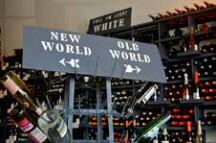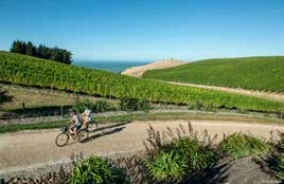
You’ve heard wines described as Old World and New World, but these terms are often misused and misunderstood. As with most things in the wine-world, the ultimate decision on which wine each prefers is based on individual preferences. To make the issue a little more confusing, the terms can actually refer to both geographical and stylistic differences.
 As for geography, Old versus New World is fairly basic, with Old World referring to Europe and New World referring to everywhere else. Historical aspects of this are that the Romans are credited with perfecting wine-making techniques and with their conquests throughout Europe and the Mediterranean, they took their vines and wine know-how. We see evidence today of this having taken root by how many countries in this part of the world still produce wine. As for geography, Old versus New World is fairly basic, with Old World referring to Europe and New World referring to everywhere else. Historical aspects of this are that the Romans are credited with perfecting wine-making techniques and with their conquests throughout Europe and the Mediterranean, they took their vines and wine know-how. We see evidence today of this having taken root by how many countries in this part of the world still produce wine.
Fast forward a dozen centuries. As European nations began exploring and colonizing the world, they did as the Romans had done before them, taking their vines and wine know-how with them across the globe. From these conquests, the great wine regions of the world outside of Europe sprouted in places like North and South America, Australia & New Zealand, and South Africa. Thus, geographically-speaking, these became the New World wine regions.
That’s one way to think of Old vs. New World wines. However, it is only part of the equation, as there are a couple more ways to think of it. Another Old and New World wine factor, and likely the most common usage of the terms you will encounter, concerns the style of wines.
 Old World style wines are traditionally more “terroir” focused and structure driven. New World style wines are traditionally more “fruit” focused and varietal driven. New World wines will often be more fruit-forward (i.e. fruity) and higher in alcohol content compared to drier and more subtle Old World style wines. Old World style wines are traditionally more “terroir” focused and structure driven. New World style wines are traditionally more “fruit” focused and varietal driven. New World wines will often be more fruit-forward (i.e. fruity) and higher in alcohol content compared to drier and more subtle Old World style wines.
A good example of this would be to match a typical California Cabernet Sauvignon with a French Cabernet. Typically, you would expect the California Cab to be bigger, fruiter, fuller, and richer. Through growing and wine making techniques, these wines showcase the full body of the varietal, regardless of where the fruit is specifically grown.
In our comparison, the French Cab will be more subtle, more food friendly, even bodied, less oaky, and better suited for aging. To be fair, geography can play a role. In general, California’s wine growing regions have hotter and longer growing seasons than those in France, which can lead to more aromatic grapes and higher alcohol content.
And while it is true that New World style wines tend to mostly be produced in the geographical New World wine countries, it is not necessarily always the case. Both styles of wines are made in each of the regional areas.
The terminology is frequently misused, as broad assumptions are made which can turn out to be fruitlessly incorrect. For example, it would be valid to expect the Cabernet Sauvignon examples from California and France to compare as previously described, but that does not mean it will always be true. Some of California’s most famous and world-renowned Cabernet wines are actually made in an Old World style. And France’s famous Bordeaux region is presently experiencing growing popularity of more varietal and fruit-forward Cabernet wines. So don’t get caught in a trap of automatically labeling a wine by its place of origin.
Yet another comparison between Old and New World wines is that in the Old World countries (France, Spain, Italy, etc.) growing and wine making regulations are much more stringent. These regulations limit the amount and types of grapes which can be grown in specific locations and may also restrict winemaking techniques.
 This “sense of place,” so traditionally protected in Old World countries, is reflected on their wine labels, which do not list a varietal by name and instead just list the growing region. Example: instead of a label for a wine from the Bordeaux area of France having Cabernet Sauvignon on the label, it will just have Pauillac identified as the growing region. This indicator alone identifies the wine being primarily a Cabernet Sauvignon wine. This “sense of place,” so traditionally protected in Old World countries, is reflected on their wine labels, which do not list a varietal by name and instead just list the growing region. Example: instead of a label for a wine from the Bordeaux area of France having Cabernet Sauvignon on the label, it will just have Pauillac identified as the growing region. This indicator alone identifies the wine being primarily a Cabernet Sauvignon wine.
So while there are imbedded traditional characteristics of wines from around the world, try to keep an open mind as there’s always a chance you’ll be surprised. Twenty years ago, California Chardonnay characteristics were for wines to be overly buttery and/or oaky. Nowadays, the trend in California is to showcase the varietal’s fruiter characteristics with cleaner, crisper wines with little to no detectable oak. It just so happens that this has been the preferred way to make Chardonnay wines in France for centuries. |